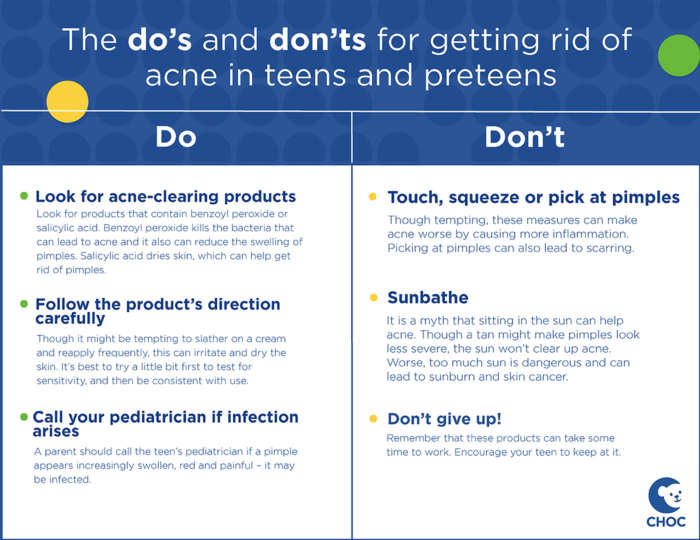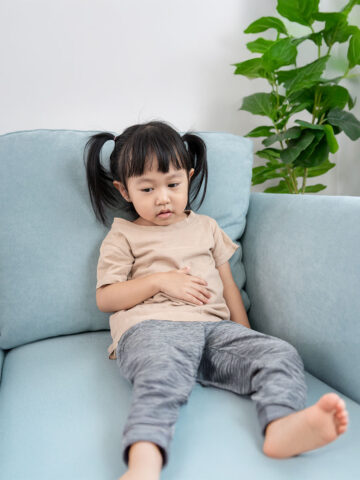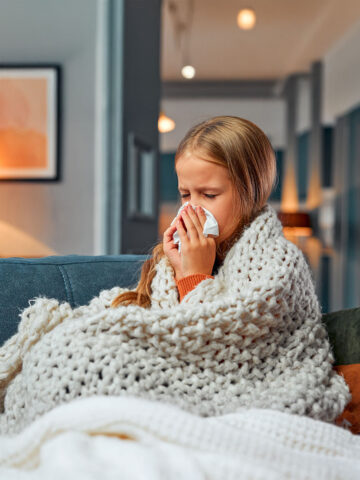Acne tips for teens
Normal teenage acne affects 80 percent of teens – along with many adults. Acne is so common that it’s considered a normal part of growing from a kid to an adult. Despite so much solidarity, it’s never easy for a teen to look in the mirror and see spots on their forehead, cheeks or chin.
How can parents help a teen overcome acne? Here, a CHOC pediatric expert offers an ultimate guide to helping parents and teens treat and prevent acne.
What is acne?
Put very simply, acne is a skin condition that shows up as different types of bumps, says Dr. Carlos Martinez, a pediatrician in the CHOC Primary Care Network.
These bumps include whiteheads, blackheads, red bumps (pimples) and bumps that are filled with pus (called pustules). This is called acne vulgaris, and these bumps usually surface on the face, neck, shoulders, upper back and chest.
These bumps appear when the teen’s pores – tiny holes covering their skin that also contains oil-producing glands – get clogged with dead skin cells, germs and oil, also called sebum.
Here’s what happens to cause each type of acne bump:
- Whiteheads happen when pores get clogged, close and then bulge from the skin.
- Blackheads occur when a pore clogs but stays open and darkens when exposed to air.
- Pimples happen when the walls of the pore break and allow sebum, bacteria and dead skin cells to get under the skin.
- Nodules, or cystic acne, is the most severe type of acne. These are painful and inflamed bumps that go much deeper in the skin than other types of acne.
A bigger skin infection called a cyst can occur when clogged pores open up deep into the skin.
Why do kids and teens get acne?
Teens and kids get acne because of the hormone changes that come with puberty, says Dr. Martinez. Hormones stimulate the sebaceous glands that are in pores, prompting them to make more sebum and sometimes become overactive. Too much sebum can clog pores, which can lead to acne.
Teens who menstruate might notice that pimples surface a few days before their periods arrive. This is called premenstrual acne and is caused by hormone shifts.
It’s likely that acne is genetic. So, if a parent had acne as a teen, their teen could expect to as well.
Stress can also worsen acne by further stimulating pores to produce sebum.
Luckily, most people get relief from acne by the time they are in their 20s.

 Print the acne prevention chart
Print the acne prevention chart
How can I prevent acne?
While there is no sure way to prevent acne, Dr. Martinez offers these tips to help reduce the number and severity of breakouts:
- Wash skin once or twice daily to remove excess surface oils and dead skin cells that can clog pores. Don’t wash too much though or you risk causing more damage by making skin too dry and irritating existing acne.
- It’s a good idea to wash skin after exercising because sweat can also clog pores. If the teen is around greasy food or oil, perhaps through an after-school job, they ought to wash their face and other acne-prone areas as soon as they get can.
- When washing, teens shouldn’t scrub their face. Instead, they should wash gently with their hands.
- Teens should take care to ensure they thoroughly remove any makeup.
- Teens who use facial lotion or makeup ought to look for products labeled as “oil-free,” “noncomedogenic” or “nonacnegenic,” which mean they won’t clog pores.
- Teens who use hair spray or other hair styling products should try to keep them away from their face as best as possible. Many hair products contain oils that can worsen acne. Water-based products are a good alternative.
- Regular hair washing and wearing long hair away from the face can help reduce the spread of oil.
- Baseball caps and other hats can cause pimples along the hairline. Teens should avoid them if they think they are worsening their acne.
- Tight, restrictive clothing can contribute to or worsen acne on a teen’s back or chest.
- Teens ought to avoid touching their face.
- Though it’s a myth that certain foods cause pimples, people of all ages will see overall health benefits, as well as skin benefits, by eating nutritious foods and drinking plenty of water.
How can I get rid of acne?
Despite best efforts, almost every preteen and teen will experience some acne at some point, says Dr. Martinez. Here are some things that kids and teens can do to treat acne:
- Look for acne-clearing products: Many products are available at drugstores to help clear up acne. Look for products that contain benzoyl peroxide or salicylic acid. Benzoyl peroxide kills the bacteria that can lead to acne and it also can reduce the swelling of pimples. Salicylic acid dries skin, which can help get rid of pimples.
- Follow the product’s direction carefully: Though it might be tempting to slather on a cream and reapply frequently, this can irritate and dry the skin. It’s best to try a little bit first to test for sensitivity, and then be consistent with use.
- Don’t give up: Remember that these products can take some time to work. Encourage your teen to keep at it.
Here’s what not to do in hopes of clearing up acne, says Dr. Martinez:
- Don’t touch, squeeze or pick at pimples: Though tempting, these measures can make acne worse by causing more inflammation. Picking at pimples can also lead to scarring.
- Don’t sunbathe: It is a acne myth that sitting in the sun can help acne. Though a tan might make pimples look less severe, the sun won’t clear up acne. Worse, too much sun is dangerous and can lead to sunburn and skin cancer.
When should I call a doctor about a teen’s acne?
A parent should call the teen’s pediatrician if a pimple appears increasingly swollen, red and painful – it may be infected.
Also, if over-the-counter products aren’t helping or the teen is experiencing cystic acne, a parent might consider asking their pediatrician to create a treatment plan. In some cases, treatment may lead to being referred to a dermatologist, a specialist who treats skin problems, about a stronger, prescription acne medicine.
These acne prescriptions can include stronger creams that prevent pimples from forming or antibiotics that decrease swelling and kill bacteria that cause pimples. A regime might include gels or creams, pills or a combination of both.
Unless the doctor says otherwise, it’s important that teens who are taking a prescription acne medication finish their entire prescription even if their skin clears up. Stopping too early leaves a chance for skin to break out again. However, even when adequately controlled, it is normal to have flare-ups happen from time to time.
How can I treat acne scars?
A person’s acne needs to be under control before scars can be treated, but typically acne scars take two forms, says Dr. Martinez:
- Scars with a gradual dip or depression, which are sometimes called “rolling” scars
- Scars that are deep and narrow
Most serious scarring is caused by the more severe forms of acne, with nodules or cystic acne more likely to leave permanent scars than other types of acne.
Most of the time though, red or brown acne marks that are left behind after pimples clear up will fade with no need for treatment, though they can sometimes take up to 12 months to go away.
If a teen is upset about acne scars, contact a dermatologist for advice about possible solutions. Treatments depend on how severe the scars are. In some cases, a doctor or dermatologist may suggest a chemical peel or microdermabrasion to help improve the appearance of scars. These treatments can be done in a doctor’s office.
For serious scarring from previous bouts with acne, several types of treatment can help:
- Laser resurfacing: This procedure can be done in the doctor’s or dermatologist’s office. The laser removes the damaged top layer of skin and tightens the middle layer, leaving skin smoother. It can take anywhere from a few minutes to an hour. The doctor will try to lessen any pain by first numbing the skin with local anesthesia. It usually takes between three and 10 days for the skin to heal completely.
- Dermabrasion: This treatment uses a rotating wire brush or spinning diamond instrument to wear down the surface of the skin. As the skin heals, a new, smoother layer replaces the abraded skin. It may take a bit longer for skin to heal using dermabrasion — usually between 10 days and three weeks.
- Fractional laser therapy: This type of treatment works at a deeper level than laser resurfacing or dermabrasion. Because fractional laser therapy doesn’t wound the top layer of tissue, healing time is shorter. Someone who has had this type of treatment may just look a bit sunburned for a couple of days.
For “rolling” scars, dermatologists sometimes inject material under the scar to raise it to the level of normal skin. Finally, in some cases, a dermatologist may recommend surgery to remove deeply indented scars.
For more health and wellness resources from the pediatric experts at CHOC, sign up for the Kids Health newsletter.
Find a CHOC Primary Care Pediatrician
From babies to teens, pediatricians from CHOC’s Primary Care Network partner with parents to offer immunizations, sick visits, sports physicals and more.





